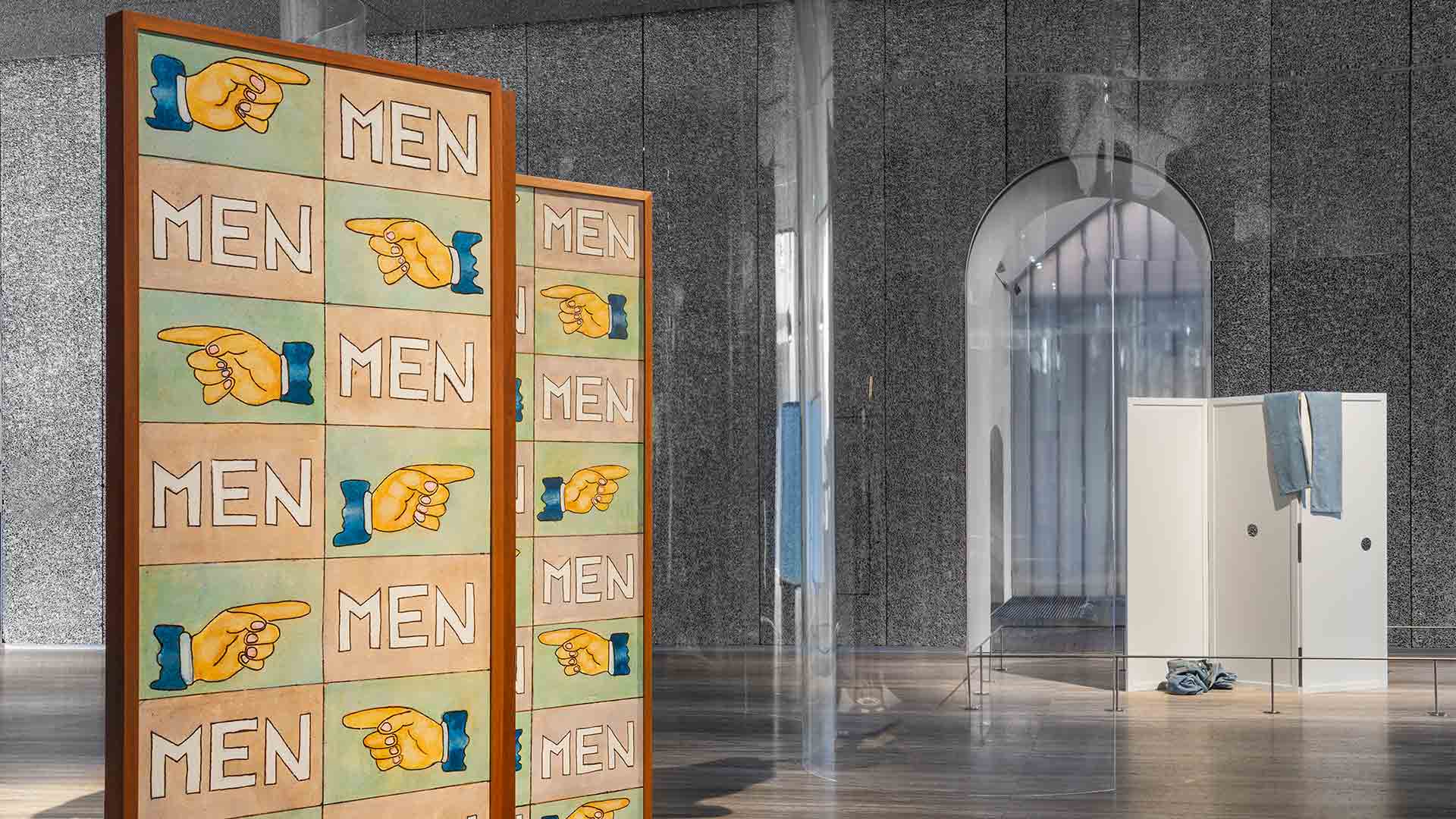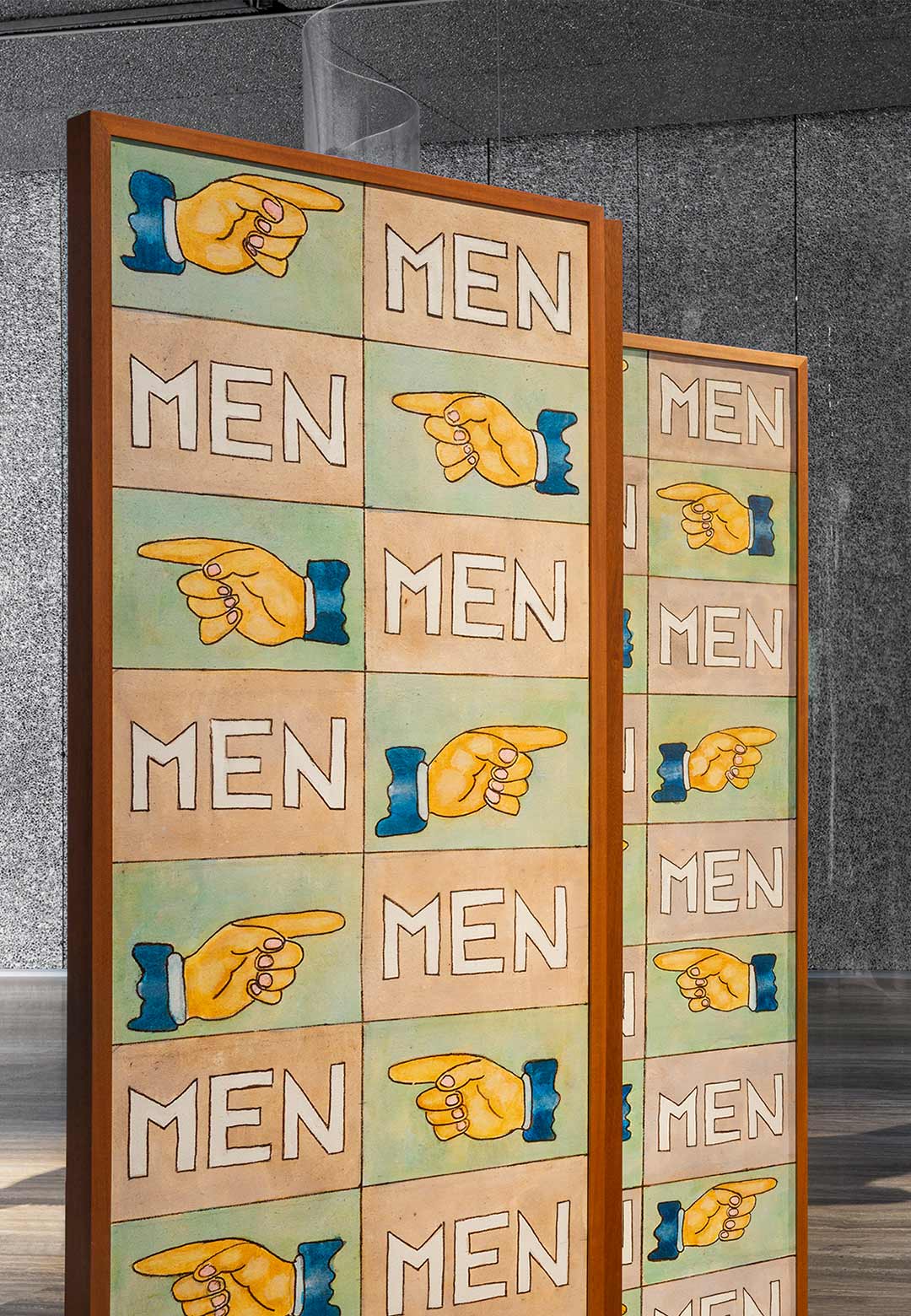Paraventi, translating to windscreens in Italian, have been historically interpreted as a medium or an object in diverse ways across disciplines, other than its literal meaning. Present across cultures around the world, its use has persisted, intertwined with ambiguity, and greatly attributed to its liminality. Paraventi: Folding Screens from the 17th to 21st Centuries, an exhibition curated by Nicholas Cullinan at Fondazione Prada’s Milan venue from October 26, 2023 - February 22, 2024, investigates the histories and semantics of the object that exists on the threshold of two conditions, both literally and metaphorically. As probed by Cullinan in his essay titled 'The Fold’ for the exhibition: “either/ or, neither/ nor: painting or sculpture? Art or furniture? Utilitarian or ornamental? Prop or performative device? Decorative, functional, architectural or theatrical?”
The art exhibition obliquely reveals the ambiguous versatility of the folding screens. “The triptych exhibition Paraventi—unfolding across three places at once: Fondazione Prada in Milan, Prada Rong Zhai in Shanghai, and Prada Aoyama Tokyo—examines the many questions and paradoxes surrounding the history of the paravents,” he explains further.
The exhibition is centred on the liminality of folding screens, evolving through centuries of cultural and artistic interpretations. Paraventi: Folding Screens from the 17th to 21st Centuries was conceived in partnership with SANAA, headed by Japanese architects Kazuyo Sejima and Ryue Nishizawa—laureates of the 2010 Pritzker Architecture Prize—who have also been responsible for projects such as The Sydney Modern Project and New York’s New Art Museum.
Seventy folding screens from across the world are exhibited, including valuable historical objects and more recent works on loan from international museums and private collections, as well as a selection of new creations commissioned from more than fifteen international artists specifically for this project. Apart from the Chinese and Japanese screens ranging from the 17th to the 19th century that paved the way for a series of transformations and metamorphoses, the exhibition includes, among others, the applications of design and architectural masters such as Alvar Aalto, Charles and Ray Eames, Le Corbusier, Josef Hoffmann, and Jean Prouvé, the avant-garde experiments of Giacomo Balla, René Magritte, Pablo Picasso, and the creations of contemporary artists such as Marlene Dumas, Mona Hatoum, Yves Klein, Sol LeWitt, Betye Saar, Keiichi Tanaami, Cy Twombly, and Luc Tuymans, and younger artists like Kamrooz Aram, Atelier E.B (Beca Lipscombe and Lucy McKenzie), and Małgorzata Mirga-Tas.
Paraventi portrays the intertwining of several cultures, tracing the origins of paravents in China in the late Chou dynasty, their migration to Japan and being eventually imported to Europe. Their introduction to the different cultures sees the purpose of these screens to flow from being objects of spiritual contemplation and inspiration in China to being placed at the threshold of a home to ward off malign influences in Japan, and the eventual evolving distinction between polyptychs and paravents in the West. During the Baroque periods, they were deployed as props in both theatre and opera. The fundamental adoption by a wide array of artists, architects, and designers brought incredible versatility to the interpretation of this simple object. The single most decisive rupture in its history was in the late 19th century when artists from Paul Cézanne to James McNeill Whistler reclaimed the paravent from its association with being a piece of functional furniture design in the West and made it a medium of artistic expression, which carries on to this day.
The exhibition is spread across two floors—the ground floor is sectioned off into segments, flowing in and out of each other as a testament to the malleability of the object being adapted and interpreted differently in multiple cultures throughout history. The sections are divided using plexiglass, rippling through space like sinuous curtains. ‘Readings, East and West’ explores the dichotomy of how the decorations in the works can be read in the East and West, from either left to right or otherwise. This emphasises the transnational character and complex history of migration and translation. 'Split Screens,' the next closest section, highlights how the screens today reflect our pervasive digital experience, while ‘Four Seasons: Space and Time, Figuration and Abstraction‘ examines how the folding nature of screens allows its narratives to unfold sequentially in space and time, both in the traditional representation of the seasons and through figuration and abstraction.
One section explores the theme of propaganda—portraying the screens’ political and provocative potential, while another explores screens in the ‘World of Interiors,’ examining how queer aesthetics hold the subversive potential to redefine the semantic field of what is considered decorative. The remaining section, ‘Parody/Paradox,’ analyses transparent screens, probing the contradictory nature that eludes the primary function of the screen. The curated works on the first floor of the exhibition—reminiscent of Lina Bo Bardi’s MASP in São Paulo and SANAA’s work for Louvre-Lens—follows the flow of the history of the object, emphasising the liminality of screens, as painting and sculpture, as art and furniture, as functional and ornamental objects, from their genesis to their present.
The modern interpretations of the paravents, commissioned for the exhibition, have been made by artists such as Tony Cokes, Cao Fei, Wade Guyton, Anthea Hamilton, William Kentridge, Shuang Li, Goshka Macuga, Kerry James Marshall, Chris Ofili, Laura Owens, Betye Saar, Tiffany Sia, John Stezaker, Keiichi Tanaami, Wu Tsang, Luc Tuymans, and Francesco Vezzoli. The pieces show an incredibly varied collection of work that speaks of the artist's body of work, being brought together under the endless possibilities of interpretations that the object being a medium brings.
The contemporary pieces showcase both, the use of folding screens as a medium to express their art or reimagining folding screens as an object in terms of the evolving contexts—while hinting to the rich history of paravents in varying degrees—of architectural, political, social and cultural spectrums, as well as their relationships with the human body. Commenting on the commissioned work that interprets paravents in the contemporary understanding, Cullican elaborates, “The artists’ thoughts and the dynamics of the production of these 21st-century screens demonstrate the potential and paradoxes of the folding screen—including those which mediate, and increasingly shape and define, our digital experience and our reality—from a variety of perspectives, artistic practices, and personal research, but also reveal the extent to which this unique art form is still very much unfolding.”
Many pieces from the exhibition make the spectators aware and introspective of many socio-cultural, geo-political and interpersonal realities. The inquiry of the poetics of folding screens through the exhibition dabbles through concepts, topics and ideas that touch almost every aspect of our humanity—the pervasiveness of technology, the feminist resilience to rewrite womanhood that is divorced from the male gaze, the documentation of cultural cross-pollination that has defined the history of humanity and that of paravents, the slippery slope of rigid distinction—and the othering through the concept of ‘them and us’—that defines the monolithic and illusory idea of national identity, among other ideological expeditions. The exhibition, while being conceptually investigative, does not fail to address the stylistic and material explorations that have been significant in the history of folding screens. The exhibition probes to shed presumptive dispositions of an object one might hold, opening the capacious possibilities of the simplest of objects, or even ideas might be.
'Paraventi: Folding Screens from the 17th to 21st Centuries' is on view from October 26, 2023 - February 22, 2024, at Fondazione Prada, Milan.






 Sign in with email
Sign in with email










What do you think?